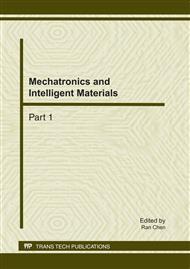p.152
p.156
p.161
p.167
p.172
p.177
p.182
p.186
p.190
Preparation and Characterization of Organic Modified Sepiolite Sorbent by Microwave Radiation
Abstract:
Based on the pretreatment including acidification, purification and sodium ion exchange, the crude sepiolite was modified by microwave radiation-wet process and CTAB as modifier. The orthogonal experiment was used to optimize the modification process. Then the crude sepiolite and modified sepiolite were characterized by SEM, FTIR, XRD, TG-DSC and BET. The results showed that the optimum modification process parameters included CTAB dosage (1.0 cation exchange capacity (CEC)), microwave radiation time (4 minutes), ethanol concentration (50%/V:V) and radiation power (800W). Compared with crude sepiolite, oil removal rate from steel rolling wastewater increased from 41.34% to 96.78% with modified sepiolite prepared at the best process. Characteristic peaks of organic functional groups, enlarged interlayer distance (0.007nm larger than crude sepiolite), enhanced hydrophobicity, amplified specific surface area (104.4m2/g) and mesopore volume had been received from above characterization methods after modification. All of the above had proved that CTAB was successfully grafted onto sepiolite.
Info:
Periodical:
Pages:
172-176
Citation:
Online since:
February 2011
Authors:
Keywords:
Price:
Сopyright:
© 2011 Trans Tech Publications Ltd. All Rights Reserved
Share:
Citation:


